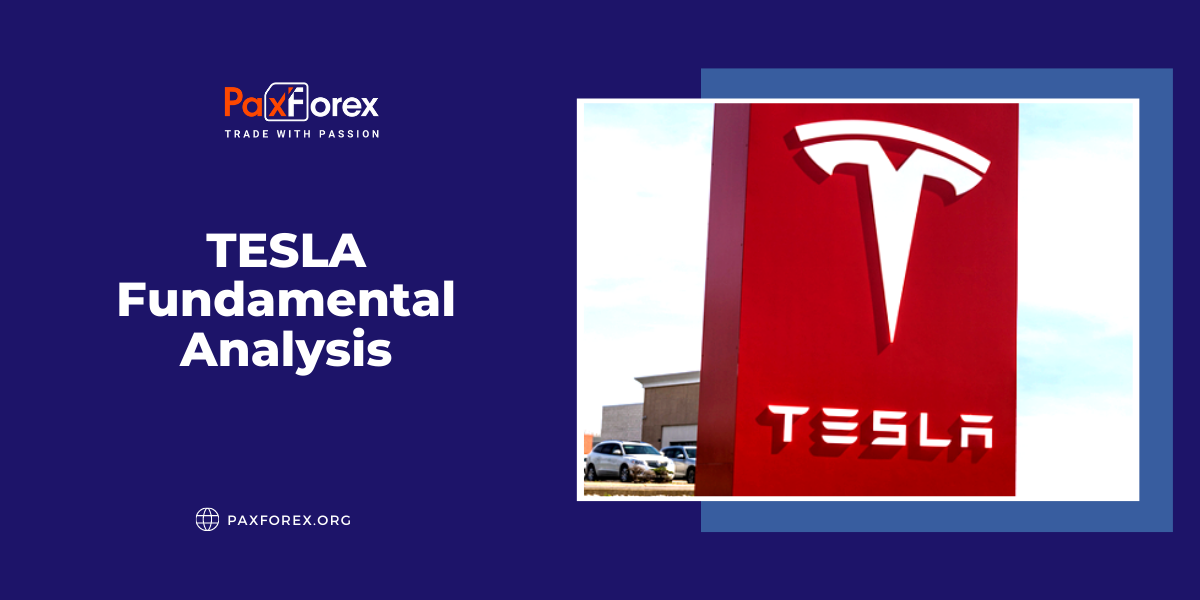
Source: PaxForex Premium Analytics Portal, Fundamental Insight
Since the election on November 5, Tesla's stock has surged by 40%, reflecting Wall Street's optimism about the company's prospects under the incoming Trump administration. This confidence appears partly rooted in the connection between Tesla's CEO, Elon Musk, and President-elect Donald Trump. Musk, a vocal supporter of Trump's campaign, has engaged with the president-elect extensively in recent weeks.
Reports suggest that the Trump administration may revisit policies from the Biden era, potentially reshaping regulations such as electric vehicle credits and rules facilitating self-driving vehicle development - areas critical to Tesla's future. While it remains uncertain how these policies will evolve, Musk's close relationship with Trump has sparked speculation that Tesla may thrive during this presidency.
Tesla has transformed into a multifaceted technology company encompassing electric vehicles, robotics, energy storage, and artificial intelligence. Musk has emphasized the strategic importance of autonomous driving technology for the company. While Tesla primarily generates revenue through vehicle sales, it aims to deploy a robotaxi fleet of self-driving electric vehicles, which could become a major revenue stream through ride-hailing services or subscription models.
During Tesla's Q3 earnings call, Musk outlined plans to launch a robotaxi service in California and Texas next year, currently testing its Cybercab with human driver assistance. However, realizing this vision will depend on regulatory approval and technological advancement. Tesla's self-driving technology currently has an SAE classification of Level 2, which necessitates an attentive driver, whereas competitors like Alphabet’s Waymo have achieved Level 4, offering autonomous ride-hailing services in select U.S. cities.
While a successful robotaxi operation would be transformative for Tesla, it remains speculative at this stage. Musk's history of missed timelines and ambitious promises necessitates cautious optimism. His demonstrated ties to Trump may provide Tesla with opportunities to influence policies favoring the company, potentially expediting its robotaxi ambitions.
However, Tesla's current financial performance paints a mixed picture. While its energy storage segment grew by 52% year-over-year in Q3, this represents a small portion of the business. Total revenue grew only 8%, and non-GAAP earnings per share rose by 9%, indicating that Tesla struggles to sustain growth that justifies its high valuation. The global electric vehicle market has experienced a slowdown, with U.S. sales heavily reliant on incentives. Analysts project Tesla’s earnings to grow annually by 15% over the next three to five years, excluding potential disruptors like the robotaxi.
Despite these challenges, Tesla's stock remains highly valued, with a forward price-to-earnings ratio of 137. While this valuation might discourage some investors, Tesla's history of defying skepticism - such as the eventual success of the Cybertruck - underscores the company's resilience and innovation. Long-term Tesla shareholders have seen impressive returns, which speaks to the potential rewards of maintaining faith in Musk’s vision.
Nonetheless, caution is warranted. Tesla's high valuation suggests limited upside potential at current levels. The stock is highly sensitive to broader market movements, and a general pullback could present a more attractive entry point for investors. For now, Tesla appears best suited as a hold, offering long-term promise but requiring patience and careful timing for new investments.
As long as the price is above 310.00, follow the recommendations below:
- Time frame: D1
- Recommendation: long position
- Entry point: 337.17
- Take Profit 1: 350.00
- Take Profit 2: 370.00
Alternative scenario:
If the level of 310.00 is broken-down, follow the recommendations below::
- Time frame: D1
- Recommendation: short position
- Entry point: 310.00
- Take Profit 1: 290.00
- Take Profit 2: 270.00













